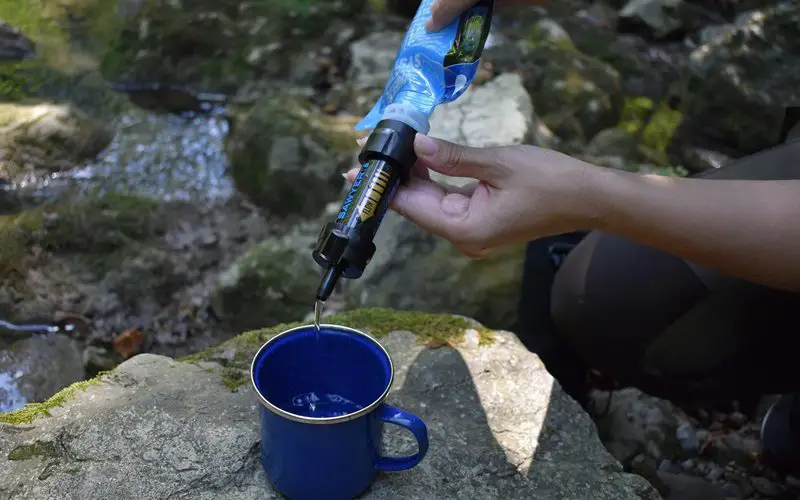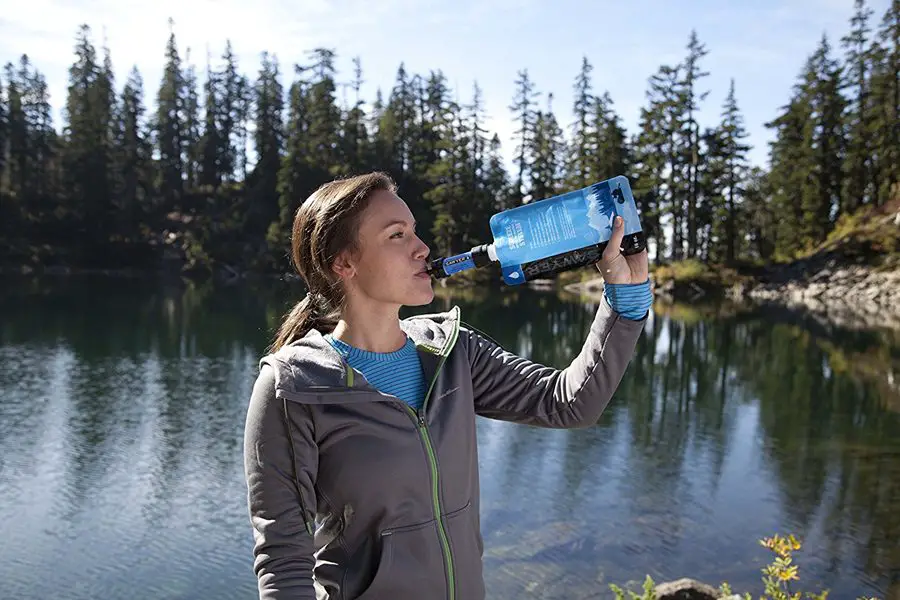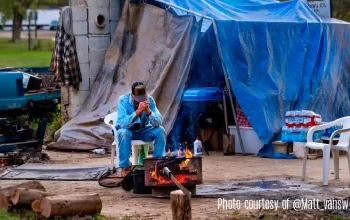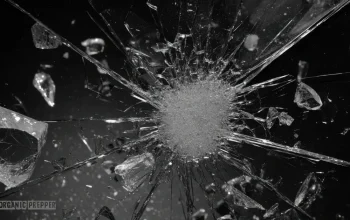SHTFPreparedness may collect a share of sales or other compensation from the links on this page.
When you go camping, water is the most valuable resource at your disposal.
You need to carry enough clean water to avoid catching bacteria that could make you sick. In an emergency, having clean drinking water is more important than having food.
You can survive up to two months without food if you have the correct water intake, but you won’t last more than a couple of days without the blue gold, so items like portable water filters are a must-have for any camping trip.
We will give you a few handy hacks to find, filter, and conserve water when you’re out in the wilderness!
9 Camping Water Hacks: Clean and Conserve
When you purify water, you’ll undoubtedly use some of it on the spot, but if you’re hiking somewhere else, you also need to carry some of it with you to get to your next camping spot or get back to your starting point.
While hiking, it’s simple to get dehydrated, and you want to carry as much clean water as you can to avoid injuries or muscular cramps, which can be very dangerous in such extreme conditions.
Here are a few essential tips for saving, purifying, and safeguarding water when camping and touring. If you run out of water and have to use river water, these tricks will come in handy. You can never be sure of what’s inside natural rivers or springs.
1. Purify Your Water

The stream you’re camping next to may appear clean, yet parasites and bacteria may be hiding in the water. Drinking polluted water can make you sick and cause various severe symptoms.
It is absolutely crucial to filter the water before drinking from any water source in the great outdoors. You can achieve this in a variety of ways, such as using camping water filters.
2. Boiling Water
For thousands of years, humans have used boiling as the simplest method of water purification.
Boiling water kills viruses, bacteria, and protozoa in the water that can make you sick. Before consuming, heat the water to a rolling boil for at least one minute.
3. Chlorine and Iodine Tablets
- One Bottle Of 50 Potable Aqua Water Purification Tablets And…
- Water Purification Tablets Make Questionable Water…
- These Water Purification Tablets For Drinking Water Leaves…
Chlorine or iodine pills are a space-saving and effective method of water purification.
You can drop water purification pills straight into a bottle of water, and the water should be safe to drink after a short time (typically 30 to 60 minutes).
Follow the directions that came with your purification tablets for the safest results.
4. UV Light Purification Systems
Many hikers have adopted small, lightweight UV-purifying devices in recent years.
Often presented as a pen, these devices use UV light to break the DNA of bacteria, viruses, and protozoa in the water, rendering them harmless.
To use the device, simply turn it on, wait for the light to turn off, and then mix the pen with your water bottle until the light goes out again.
5. Water Filtration Systems
Water filtration systems are an excellent way to get clean water when camping. There are many lightweight and small filtration systems on the market that operate by physically removing the contaminants in water that can cause diseases.
There are many different systems available, such as those that you can submerge in water and use as straws. This system filters the water as you suck on the straw.
Other water filtration systems use a bag that you fill with water. To collect the purified liquid, you press the water through the filtering part of the device and link it to your bottle.
Moreover, you can use saltwater, but not excessively, as it can cause dehydration, and an excessive salt concentration can trigger diarrhea. It’s not easy to desalinate, but you can boil it to kill dangerous parasites and remove part of the salt.
6. Don’t Consume Products That Will Make You Thirsty
Drinking alcohol, caffeine, salt, and sweets before and during your trip to the wilderness will make you thirsty.
This is also applicable to some foods that contain high amounts of salt or sugar. Sugar will absorb a portion of the water in your bloodstream, causing further dehydration.
7. Carry Water But Not Too Much
Carry enough water to last you the entire trip. Various factors, such as the weather, the length of your trip, the physical strain on your body, and your body type, determine the amount of water you require.
Every hour, a liter of water is considered enough for the typical hiker. Having said that, you shouldn’t carry too much water, either. More weight means your body will need to work harder, which will make you exhausted quicker.
8. Keep Your Body Cool
To keep your body temperature at a reasonable level, consider walking in the shade when possible.
You can also decide to walk during the hours of the day when the temperature is lower and avoid direct sunlight. Higher temperatures and direct sunlight will cause excessive sweating, resulting in your body needing more water.
9. Pre-Hydrate
To pre-hydrate, drink seven to 20 ounces of water within the two hours leading up to the start of the trail.
This can significantly reduce the risk of muscular cramps, and you’ll feel better when you start hiking.
Wrap-Up
Camping can be a great way to get back to nature, explore new areas, and unwind from the hustle of city life. However, enough clean water is a key component of a successful and safe camping trip.
You can use the above tricks, such as boiling water and using iodine pills, to gather and purify water when you start running low.



